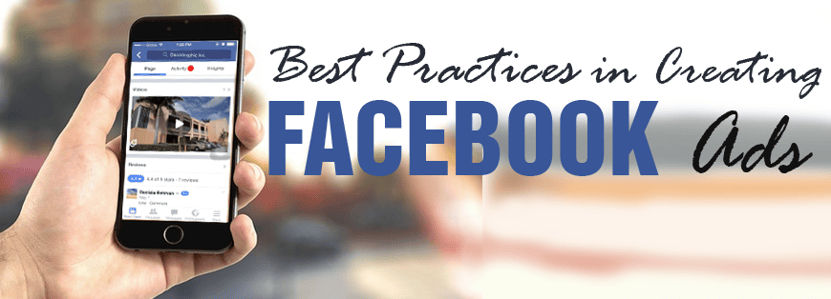Last year, Facebook has proven itself to be a tough opponent in the social media marketing field, especially when Mark Zuckerberg introduced a focus on video content, leading the way to its great popularity. Facebook’s virality has doubled since last year after video content marketing was initiated. This focus was made possible due to the news about the rapid shift of marketing from TV to mobile video ads.
 Facebook has so many possibilities to deliver to help advertisers better reach their target audience.
Facebook has so many possibilities to deliver to help advertisers better reach their target audience.
So if you’re planning to take off your marketing strategies through this platform, but are worried about having a limited idea where to start, here are the practices you can apply to help you out.
DETERMINE YOUR OBJECTIVE
The first thing you need to do is determine your objectives. Is your marketing intended for boosting your brand awareness or driving conversions? That objective will be the main focus of your video content and its distribution process. On your meticulous planning, you can choose three categories to channel all your effort into. Example: engagement, audience reach, and brand lift.
CONVERSION'S FOCUS: CLICKS, CTR, REVENUE GENERATED
Engagement’s focus: engagement (likes, shares, comments), audience retention (how much of your video was watched by the viewer), relevance score (measure how relevant your video is to your audience)
Audience Reach focus: impressions (how many are your viewers), percent of in-target audience
A successful marketer knows what metrics he will use and what goals he needs to achieve before video creation begins. This includes determining his target audience of gender, age, locality, interests, behavior, relationship status, etc. The efficiency of Facebook advertisement depends on your targeting capabilities. Narrowing your target group might lessen your overall views, however, by doing so in order you can focus on relevant users alone will help increase your CTR.
You can set your Facebook target audience through “Audience Insights” option found in your Facebook page’s manager. As you gather the data for your campaign, make sure to note down results regarding highest CTR and LTV and use that data in coming up your ideal target audience.
Video Content Planning
The next thing on your to-do list is planning of what video content you will produce. As mentioned earlier, this consideration depends on the data gathered about your target audience.
1. Know what topic gives an impact.
2. Make your message clear.
3. Think of the most engaging CTA to use.
4. Write the script!
The most challenging part begins at the actual video creation. Here, you choose the kind of gear that’s appropriate for your business by considering your experience level and the number of times you’re planning to make videos in the future. Beginners may resort to smartphones and microphones to capture decent photos and record videos, but if you are aiming for a better quality video, then it’s best to trade for a higher with better lights and a studio.
Setting up your campaign using Facebook involves a pretty straight-forward process, especially when normal set up is being used. Here are the basic steps:
- Create an ad and select “Video Views” as your objective. There’s a “boost post” option for you, but it’s smarter to use “Video Views” as it incurs you a lower cost.
- Choose your audience. As mentioned earlier, keep an eye on the highest CTR and LTV data.
- Set up your budget and pricing. That amount will be used for optimizing your ad.
- Upload the video. Choosing your video appropriately will have a long-term effect on the number of your views.
- Edit your ad copy. Include your ad copy as well as your CTA, then select where your ad will be viewable, either on the web, mobile or both.
There you have the basic practices you need to start your Facebook campaign. Make everything organized and carefully planned.





.png?width=352&name=Copy%20of%20SCS%20-%20Blog%20Template%20(52).png)